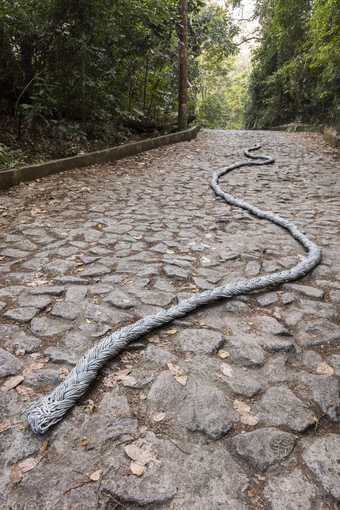Previously part of the Materials and Objects display
Intrigued by the unexpected and the inexplicable, Tunga explores the transformation of materials and the magical properties of hair
Drawing from archaeology, mythology, philosophy, psychology and literature, the Brazilian artist Tunga created enigmatic and surreal artworks. Hair, and specifically the form of the braid, is a recurring symbol across much of his work. In the 1980s, Tunga produced braided sculptures in varying sizes from copper and other metals. Braid [Trança] c.1983, made entirely of lead, remains one of the earliest and largest of the series. This long braid can be displayed in a variety of configurations on the floor or snaking up the wall.
Underlying much of Tunga’s work is his fascination with blurring the boundaries between reality and myth. Should you happen upon twin girls connected by the hair wandering around the museum, this is a performance conceived by Tunga. He first staged the performance Xifópagas Capilares entre Nós in 1984. He also published an essay of the same title, which can be loosely translated as ‘Capillary Conjoined Twins Among Us.’ It describes a variety of unusual occurrences that he experienced or encountered in newspapers and scientific articles. In particular, Tunga relates the myth of twin Nordic girls connected by the hair. Their existence caused discomfort and conflict in their village. Finding inspiration in this uncanny and archetypal image, Tunga produced performances relating to the twins throughout his career.
Curated by Michael Wellen and Fiontán Moran
Tate Modern

